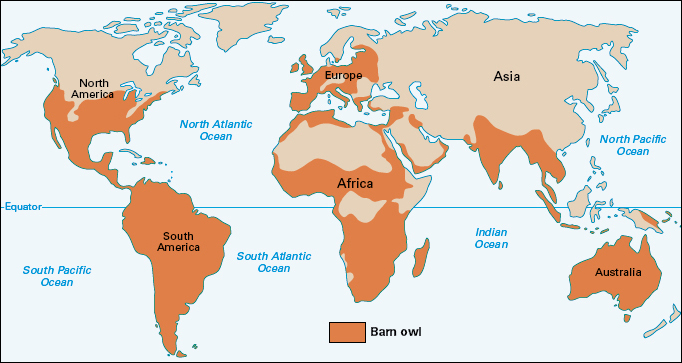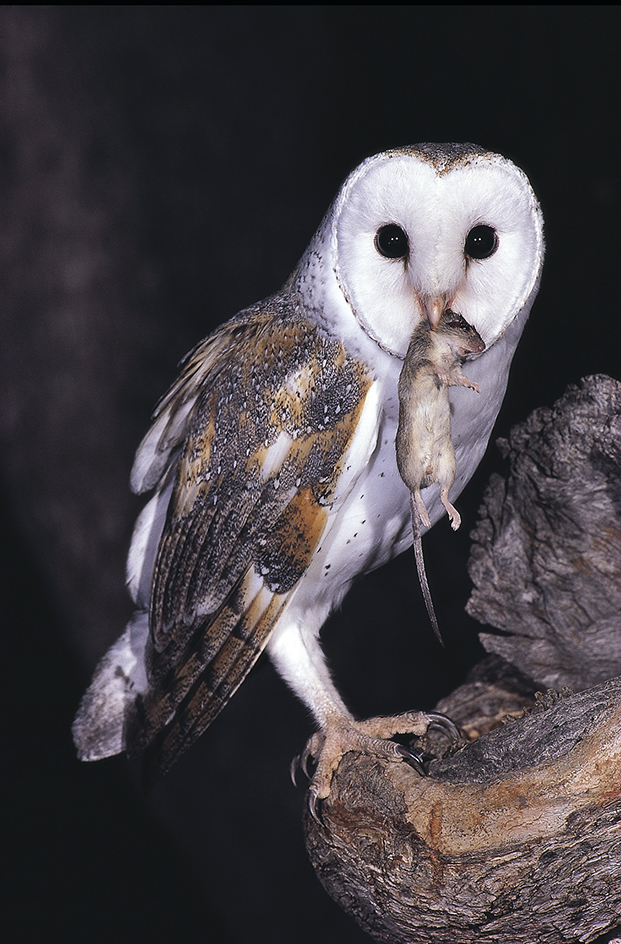Barn owl is a bird of prey named for the building in which it may live. Barn owls may also live in hollow trees, holes in cliffs, abandoned mine shafts, church steeples, and attics. The barn owl lives in temperate (moderate) and warm climates worldwide. It is one of the best known owls in the world.

The barn owl has a large, white, heart-shaped face and dark eyes that are small compared with the eyes of other owls. A barn owl is generally brownish-yellow and gray on the back and on the upper side of the wings. Its breast and abdomen are white or brownish-yellow with small dark spots. Males tend to be lighter in color than females. The size of the barn owl varies from region to region. In North America, barn owls are about 15 to 16 inches (38 to 41 centimeters) long. Their wingspread is about 40 to 44 inches (100 to 110 centimeters).
Barn owls are primarily nocturnal (active at night), but they may also hunt for food during the day if they have hungry young to feed. Barn owls eat mainly such small rodents as mice, rats, and voles. Occasionally, they also eat birds, insects, and small reptiles and amphibians. Barn owls hunt by flying back and forth over open fields. When a barn owl hears or sees prey in the grass, the bird dives down and captures the prey in its talons.

Most barn owls raise one brood (group of young) per year. But barn owls sometimes raise two broods or more in years when prey is plentiful. A female barn owl generally lays 4 to 7 eggs but may lay as many as 15. She lays an egg every 2 to 3 days, and eggs begin to hatch after 30 to 32 days. Young barn owls begin to learn to hunt when they are 7 to 8 weeks old. They become independent when they are 10 to 13 weeks old. A barn owl can live over 20 years in the wild.
Barn owls do not hoot, as do most other owls. The barn owl’s most common call is a loud, harsh screech. When threatened in the nest, young barn owls try to scare off intruders by hissing loudly as they spread their wings and sway from side to side.
